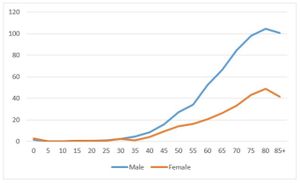Supporters of the Bharatiya Janata Party (BJP) erupted in celebration outside its Delhi headquarters on the morning of the 2025 Assembly elections, as trends indicated the party was poised to return to power after more than 26 years with a decisive mandate. The atmosphere was vibrant: supporters danced to live drumbeats, waved flags adorned with the party's lotus symbol, and smeared each other with saffron-colored powder. These enthusiastic displays highlighted the buoyant mood among BJP supporters as the Election Commission reported the party leading significantly across the national capital.
According to the latest Election Commission trends, BJP was leading in 41 of Delhi's 70 assembly seats, with the Aam Aadmi Party (AAP) advancing in 29 seats. The counting of votes began at 8:00 AM, drawing attention not only from Delhiites but from across the country as the political stakes were high. This election was framed as primarily a three-way race between the BJP, AAP, and Congress, with much focus on key constituencies such as New Delhi, Kalkaji, and Okhla.
Virendra Sachdeva, the Delhi president of BJP, after offering prayers at the Hanuman temple, stated, "The results so far are in line with our expectations but we will wait for the final outcome." His optimism was palpable as he expressed confidence about the BJP's return to governance.
Meanwhile, Ramesh Bidhuri, the BJP candidate from Kalkaji, reflected similar sentiments, saying, "The people will give the BJP a decisive mandate. Under Prime Minister Narendra Modi's leadership, Delhi will progress alongside the rest of the country." His remarks encapsulated the overarching message from the BJP camp—as the counting continued, the BJP's narrative positioned it as the party of progress against AAP's governance.
With the early trends favoring BJP, updates flowed rapidly throughout the day. By 4:45 PM, the official trends indicated BJP had won 40 seats, with AAP having secured 18. Earlier, the counting updates revealed the following breakdown: as of 12:00 PM, BJP was leading with 46 seats to AAP’s 24, and by 10:40 AM, BJP secured 41 seats against AAP's 29. This proliferation of data showed the significant regression of AAP, which only recently was the dominant party.
The results trace back to the shifts in voter sentiment influenced by various factors over the years, including criticisms of AAP's governance and economic conditions within the capital. Despite AAP's formidable campaign led by Arvind Kejriwal, the trends seem to point toward substantial public support for BJP once again. Observers noted the importance of this election not just for local governance but as indicators of larger trends within Indian politics.
The election saw 699 candidates contesting across the nooks and crannies of Delhi, highlighting the competitive nature of this electoral event. Notable candidates included Arvind Kejriwal and Atishi from AAP, alongside seasoned political figures like Sandeep Dikshit and Alka Lamba from Congress. Each brought their distinct narratives and promises to the fore, yet the overpowering support for BJP reflected broader national sentiments.
Leading figures of Congress took note as trends rolled out; they initially struggled to show strong leadership but remained present, awaiting the eventual unraveling of results. From earlier trends, Congress had managed to claim one seat, with only whisperings of support among voters who have preferred to shift their allegiance to BJP.
Following the trends, the buzz on social media and public forums greatly influenced the momentum; BJP's strategic outreach seemed to resonate well among diverse voter demographics. Enthusiastic crowds at party headquarters now echoed calls for BJP to take the lead not just at the state level but also nationally. Public engagement amplified as individuals discussed potential outcomes projected by preliminary data, sparking conversations about future governance.
While excitement was palpable within BJP's ranks, AAP looked toward the final outcome with hopes to salvage as many seats as possible. Echoes of past performances became increasingly faint as AAP representatives handled queries from journalists, projecting calm amid the turbulence of disappointments. The party's once stronghold now appeared tenuous as results unfolded.
By the end of the day, as the results cemented, it was clear the significance of such electoral dynamics would have larger narratives, influencing not only the future of governance at the state level but potentially shaping forthcoming national political strategies. The contrasting experiences of the day illustrated the highs and lows faced by parties within one of the nation’s most electorally vibrant capitals.



